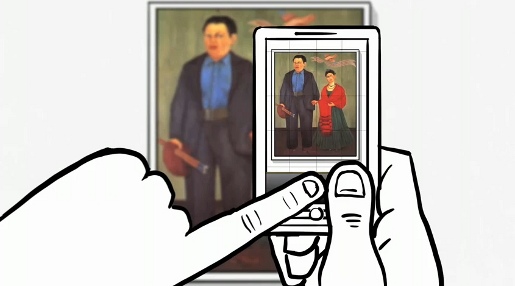New in Sight and Touch: Google Goggles at Met, Renaissance Statuettes at Walters Art Museum
There comes a time in life when you must reach into your pocket, and put on your Google Goggles. This moment often occurs when you see something of interest but are at a loss to search for it; a nameless building in San Francisco that you know is iconic but you’re not sure why, a sculpture in Rome that you are unable to identify since it’s outside of the confines of a museum. In these brief but intense moments of intellectual despair, Google Goggles can help steer you away from a lifetime of questioning.
Well, perhaps not a lifetime of questioning, but it can definitely put you on the fast track to your own personal aha! moment. Google Goggles is an app that uses image recognition software to provide information on objects, buildings, or artworks of interest and can be downloaded on Android phones as well as the iPhone. The app can serve multiple purposes (from recognizing wine labels to translating menus in Italian), but its ability to recognize artworks was one of the reasons that the Metropolitan Museum of Art itself decided to don a pair.
It’s safe to say that the Met was pleased with what it saw, because in collaboration with Google, the museum has made a mighty number of works, precisely 76,000 two-dimensional works of art, accessible on Google Goggles. The app will link to the Met’s website to give a user the information they desire about a particular artwork.
The Google Goggles app can help you see artworks both inside and outside the museum. Suppose you notice a particular work on a banner or in a magazine but, alas, your knowledge of art history is currently on vacation in Crete. Well, Google Goggles can help you locate it in a museum, such as the Met, and provide you with the information that had been eluding you. Or say you’re inside the museum but would like more context or history on a particular piece, Google Goggles can once again leave you much more knowledgeable. According to the Met, the need for Google Goggles may just arise out of the unrequited love between you and a seemingly unidentifiable piece of art (see video below).
http://www.youtube.com/watch?v=jC4d9e3M-x0
As you sharpen your vision of the Met’s collection with Google Goggles, an upcoming exhibition at The Walters Art Museum in Baltimore is letting you experience its collection through touch! Titled Touch and the Enjoyment of Sculpture: Exploring the Appeal of Renaissance Statuettes, the exhibition “explores the implications of tactile perception for enjoying sculpture by melding the research of a Johns Hopkins University neuroscientist studying how the brain reacts to tactile stimuli and a Walters curator interested in the increased appreciation of tactility as an aspect of European Renaissance art.”
The exhibition will showcase 12 artworks along with 22 replicas, which visitors can actually hold in their very hands! Afterwards, visitors can reflect on this opportunity to not only see, but also sense an artwork, and “register their preferences through “touch pads”. The concept of tactility is one that I find interesting and had explored earlier in The Evolution of Touch. Coincidentally, the exhibition at the Walters Art Museum is attempting to gauge whether the draw towards hand-held technologies has its roots in the popularity of Renaissance statuettes, which were “objects apparently made to fit in the hand.”
While I viewed the iPhone or the iPad as our vehicles for tactile appreciation of two-dimensional artworks, the Walters Art Museum posits that our desire for hand-held technology has its roots in art appreciation during the 16th century. A touching twist, I’d say!
Nevertheless, the introduction of Google Goggles at the Met is yet another signal of how our sense of sight, even while viewing art, is supplemented by the devices we carry with us, whereas the exhibition at the Walters demonstrates that at times, we have to return to our art historical past to make sense of the technological present. And we should seize these opportunities to experience the past because, try as they may, the great bankers of 16th century Florence will never know the delight of the iPhone.
